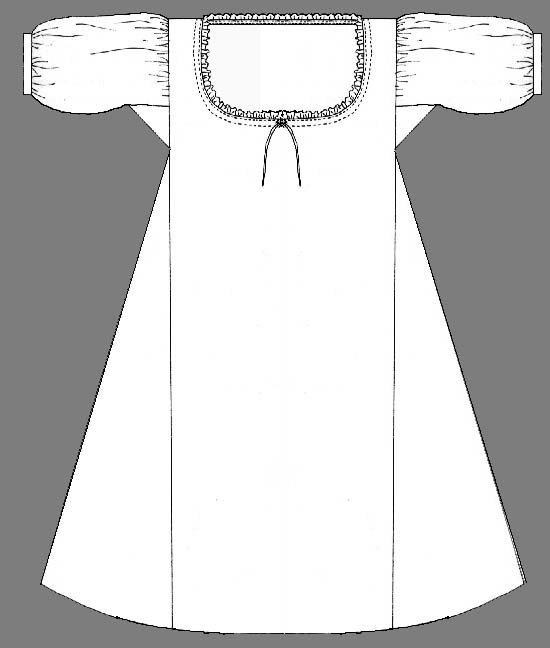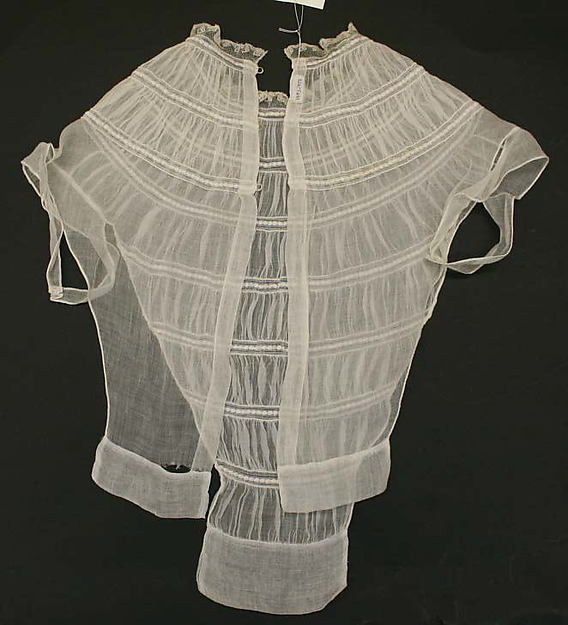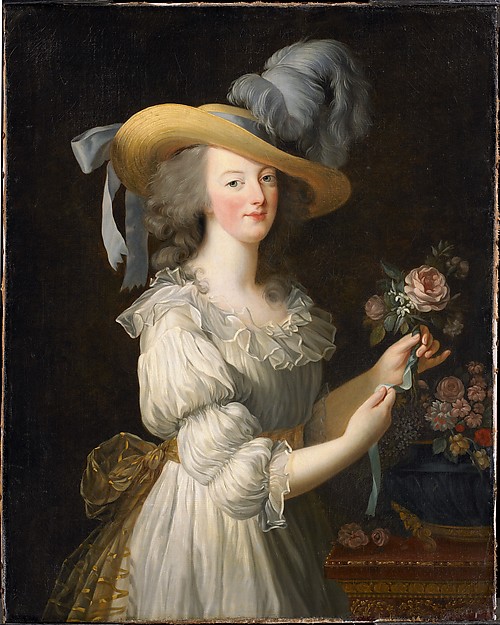che·mise
SHəˈmēz,SHəˈmēs
noun
- a dress hanging straight from the shoulders and giving the figure a uniform shape, popular in the 1920s.
- a woman's loose-fitting undergarment or nightdress, typically of silk or satin with a lace trim.
- a priest's alb or surplice.
- Today we take a look at an article of women's clothing known as the chemise or the shift.
The Chemise most likely evolved from tunics which were garments worn by Greco-Roman men and women as well as Celtic men and women. Originally called a smock by the Saxons, the term became interchangeable with chemise, a Norman (French) word for a man's shirt. The word shift was used also but was considered a vulgar term used by lower classes. It was a loose fitting garment typically knee length worn next to the skin to provide a layer of protection to outer clothing from body oils and sweat. This helped to keep outer garments lasting longer since it reduced the need for washing.They were also worn as night gowns. Wealthy women might own several shifts, while poor, working or country women may have only owned one.
Materials used for the chemise varied from fine linen, holland, and cambric to cotton, and silk. Depending on the neckline of the dress, the chemise could have a high neckline with embroidery, lace or ruffles, or a low neckline that was not meant to be seen. They were almost always white. Sleeve and hem length also varied as the style of women's dress changed through out history. Some extant examples show bobbin lace or embroidery all the way down to the waist or along the seams to act as reinforcement. Sometimes they were heavily perfumed to help cover body smells or the smells from the laundering process.

Chemise pattern
The chemisette was a "little chemise" used to fill in the neckline of a gown without the added bulk of a full chemise.

Chemisette
Queen Marie Antoinette of France shocked genteel society by allowing herself to be painted in a Chemise dress. This dress, also called chemise a la reine or gualle, was such a contrast to the normal attire of constricting, large hooped dresses worn at the French court. These dresses were made of light, gauzy muslin, tied with a sash around the waist and gave the impression that the wearer was in hardly more than her undergarments! These dresses were so thin that they garnered the nickname the Influenza Dress.

Marie Antoinette in Chemise Dress Oil on canvas 1783 Élisabeth Louise Vigée Le Brun
The chemise took on many styles such as the princess chemise, or the empire chemise with a sloping front waist and puffy short sleeves. In 1877 a new style of combining a chemise and drawers together came on the fashion scene making the basic chemise outmoded. This garment could have a back or front opening and were worn to obtain the desirable female figure. By the mid 1900's the chemise was shortened into a vest-like garment but retained its original name. Also by this time it was no longer being worn as sleep wear. Separate garments known as pyjamas were the commonly worn clothing attire to sleep in.
Today a modern chemise is still typically an unfitted, loose flowing women's undergarment. Chemise dresses are still in fashion as well and basically have the same form and function.

Further reading:
The History of Underclothes - C.Willett and Phillis Cunnington
Clothing Through American History: The Federal Era -Antebellum 1786-1860 - Ann Buermann Wass and Michelle Wenn Fandrich